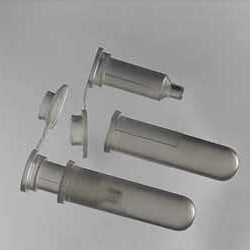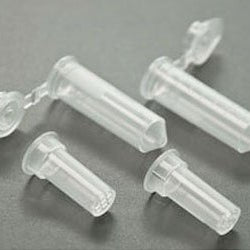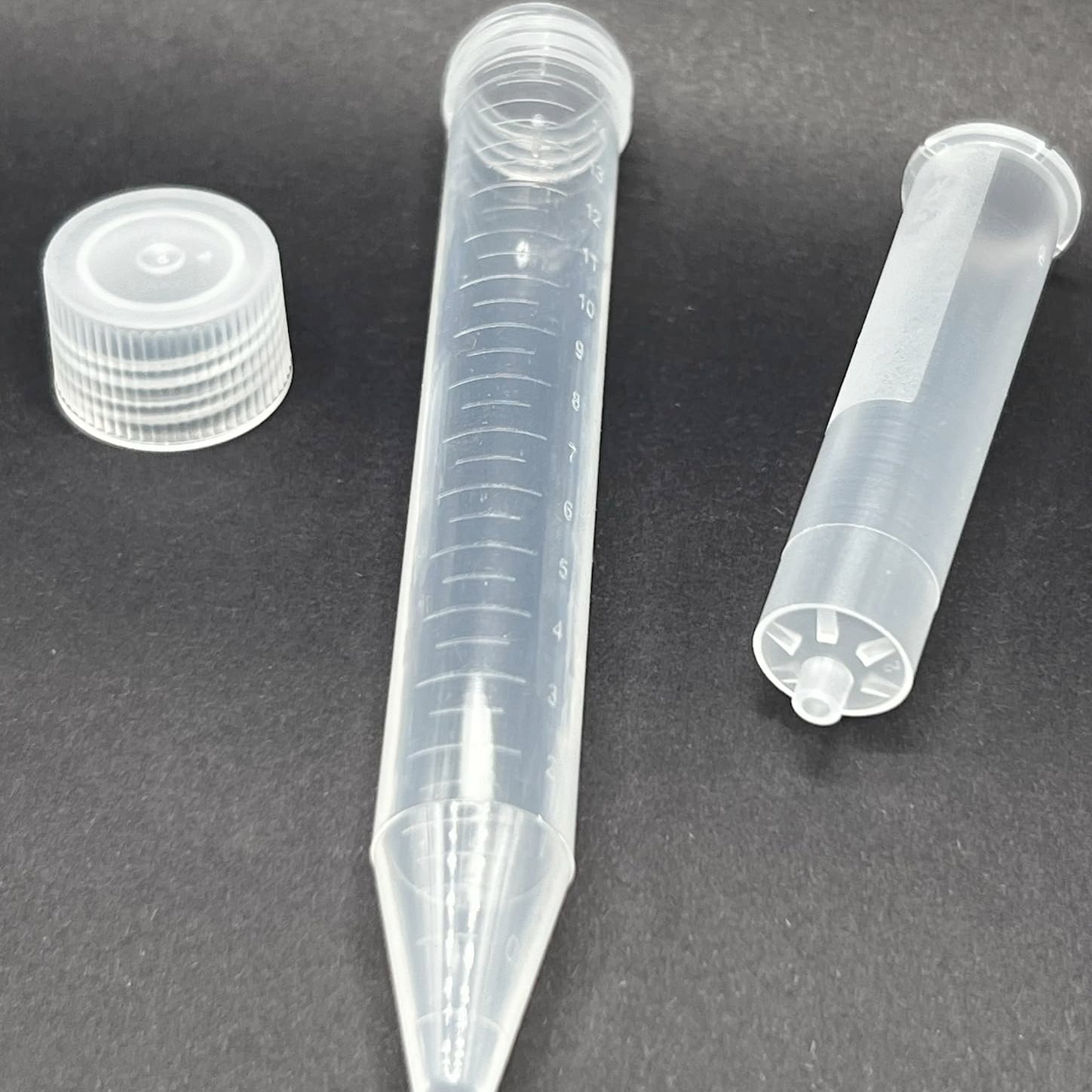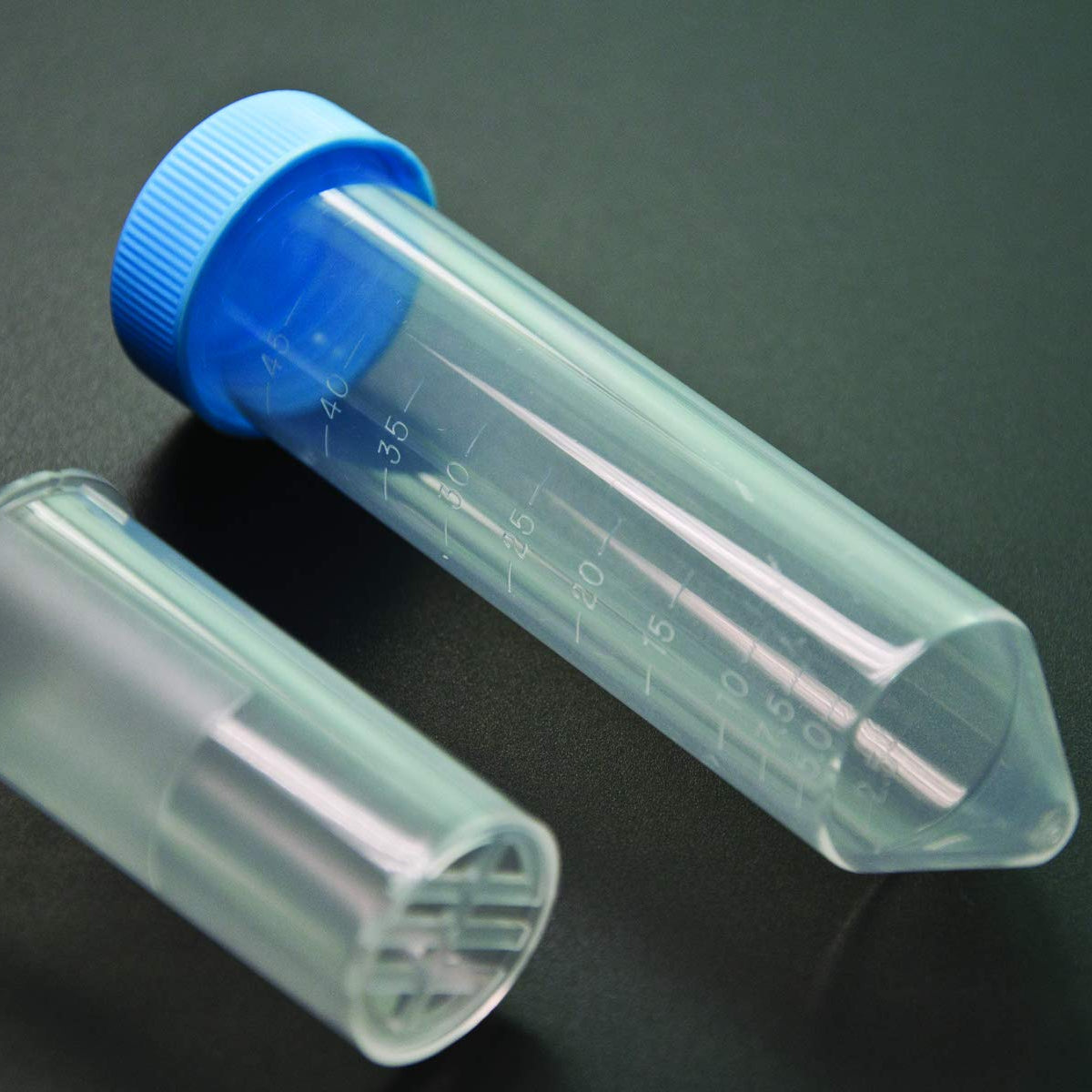Centrifuge Filters—Efficient Filtration for Small Sample Volumes
Ciro’s centrifuge filter tubes are engineered for fast, reliable filtration of small-volume biological or chemical samples. These high-performance filter devices are ideal for bacteria and particle removal, HPLC sample prep, cell isolation, and DNA recovery from gels. Each unit features a dual-purpose cap that seals both the sample chamber during centrifugation and the receiver tube post-spin for safe sample handling.
Available in a full range of sizes—from nanoliter-scale to 25 mL capacity—our filters support diverse applications in molecular biology, clinical diagnostics, and analytical chemistry.
Key Features & Benefits
-
Wide range of membrane options for various target molecules and contaminants
-
Durable polypropylene housing with marked, graduated collection tubes
-
Low hold-up volume for maximum sample recovery
-
Designed for bench-top centrifuges, withstanding up to 10,000 × g
-
Supplied non-sterile and compatible with ethanol sanitization
Product Variants
🔹 Nano-Spin Filter Tubes
-
Sample volume: up to 450 µL
-
Membrane diameter: 3 mm
-
Hold-up volume: <2 µL
-
Max force: 10,000 × g
-
Filter dimensions: 8.87 mm OD × 28.53 mm L
-
Collection tube: 10.38 mm OD × 37.97 mm L
🔹 Micro-Spin Filter Tubes
-
Sample volume: up to 850 µL
-
Membrane diameter: 7.02 mm
-
Hold-up volume: <5 µL
-
Max force: 10,000 × g
-
Filter dimensions: 8.13 mm OD × 23.64 mm L
-
Collection tube: 10.55 mm OD × 38.10 mm L
🔹 Midi-Spin Filter Tubes
-
Sample volume: up to 5 mL
-
Hold-up volume: <10 µL
-
Max force: 5,000 × g
-
Filter dimensions: 13.35 mm OD × 67.80 mm L
-
Collection tube: 16.8 mm OD × 120 mm L
🔹 Maxi-Spin Filter Tubes
-
Sample volume: up to 25 mL
-
Use with fixed-angle rotors
-
Hold-up volume: <20 µL
-
Max force: 2,500 × g
-
Operating temp: up to 50 °C
-
Filter dimensions: 24.6 mm OD × 60 mm L
-
Collection tube: 29.3 mm OD × 114.5 mm L
Application Notes
-
Filtration rate may vary based on sample viscosity, concentration, temperature, and centrifugal force.
-
For best results, optimize spin time based on your application.
-
Non-sterile product; sanitize with 70% ethanol if sterility is required.
-
Store at ambient temperature upon receipt.
Ready to improve your sample filtration workflows? Contact us to discuss custom membranes or volume needs.
Membrane Selection
- All filters are available with many different membrane types: Nylon, Polypropylene, Nitrocellulose, PES, PVDF, PTFE, Cellulose Acetate, Regenerated Cellulose and many others.
Nylon
Nylon membrane filters are fast becoming the "standard" filter material due to their wide chemical compatibility range and naturally hydrophilic characteristics. Nylon filters can be used to filter all aqueous and the majority of solvent solutions.
-
Naturally hydrophilic
-
Wide chemical compatibility range
-
Strength and dimensional stability
-
Extremely low extractables
Applications
- Sterilization, clarification of aqueous and organic solvent solutions
- HPLC sample preparation
Polypropylene
Polypropylene membrane filters are composed of pure polypropylene with absolute pore size ratings. These filters offer broad chemical compatibility allowing its use with aqueous and organic solvent samples. The polypropylene filter has extremely low extractable levels designed to provide accurate, consistent analysis results for sensitive ion chromatography applications while prolonging column life. Polypropylene filter is the preferred filter membrane for HPLC applications where the detection levels are below 230 nm. The filters also exhibit negligible protein binding, which is essential for maximum sample recovery of critical, small volume protein samples.
-
Broad chemical compatibility
-
Hydrophobic
-
HPLC applications - detection levels < 230 nm
Applications
- Aqueous and organic solvent filtration
- HPLC sample preparation requiring low detection levels
- Ion chromatography
- Total digest for heavy metals
CA (Cellulose Acetate)
CA (Cellulose Acetate) membrane filters are composed of pure cellulose acetate modified to offer researchers the lowest binding filters available. Due to the extremely low binding characteristics, these filters provide higher throughputs than competitive offerings and reduce filter changes when filtering proteinaceous solutions. Because of their unique strength and extremely low binding characteristics, CA (Cellulose Acetate) filters are ideal for protein and enzyme filtrations, tissue culture media sterilization, cold sterilization, biological fluid filtration and other filtration applications where maximum recovery of proteins is critical.
-
Lowest binding material available
-
Hydrophilic
-
High throughput
-
Strength and dimension stability
-
Uniform pore structure
Applications
- Protein and enzyme filtration, sterilization
- Biological fluid filtration sterilization
- Tissue culture media sterilization
PTFE (Teflon®)
PTFE (Teflon® Registered trademark DuPont) polytetrafluoroethylene membrane consists of a pure PTFE laminated to a polypropylene support for improved durability and easy handling. These filters are chemically compatible with strong acids and most aggressive solvents such as alcohols. Laminated PTFE filters can also be used to filter aqueous solutions when prewetted with methanol.
-
Naturally hydrophobic
-
Compatible with strong acids and aggressive solutions
-
Improved durability and handling
Applications
- Filtration of strong acids and aggressive solutions
- Venting applications
- Phase separations
- Aerosol samplings
Nitrocellulose
Nitrocellulose - Mixed Esters (ME) - unsupported filters are composed of a mixture of inert cellulose nitrate and cellulose acetate polymers. The uniform microporous structure of these filters provides the fastest flow rates and highest throughputs available in a membrane filter. Because they are biologically inert, Nitrocellulose filters are ideal for a wide range of clarification, sterilization, and analytical applications such as: microbiological analysis, clarification or sterilization of aqueous solutions, industrial hygiene applications, silt density index (SDI - 0.45µm, 47mm) and particulate-matter analysis.
-
Hydrophilic for aqueous clarification and particulate capture
-
Consistent high flow rate for faster filtration
-
Uniform pore structure for selectivity
-
Hydrophilic, inert cellulose nitrate
-
High binding capacity
-
Manufactured thickness within 10 microns
Applications
- Aqueous filtration
- Microbiological analysis
- Sterility testing
- Gravimetric analysis with ashing technique
- Particulate analysis
- Black - food and beverage
PES (Polyethersulfone)
PES (polyethersulfone) filters are inert which provide extremely low extractable levels in critical sterilization applications such as protein and enzyme filtrations, tissue culture media sterilization, cold sterilization, biological fluid filtration and other sterilization applications where maximum throughputs and fast flow rates are the critical factors.
-
Very Low Protein Binding
-
Fast Flow Rates
-
Low Extractables
-
Wide Chemical Compatibility Range
-
Strength and Dimensional Stability
-
Autoclavable
Applications
- Protein and enzyme filtration sterilization
- Biological fluid filtration sterilization
- Tissue culture media sterilization
- Pharmaceutical sterilizing filtration
- Environmental water studies





